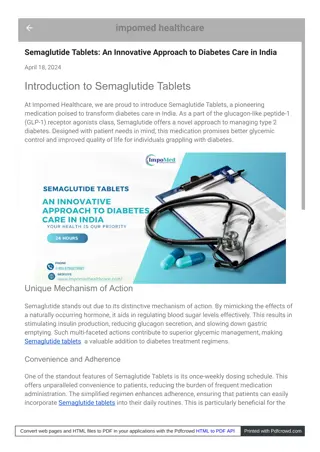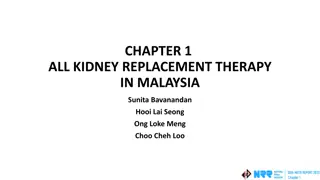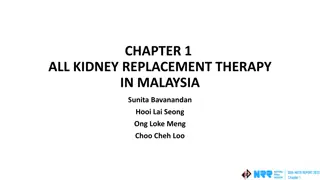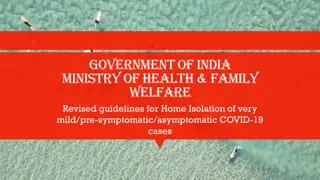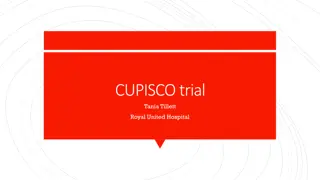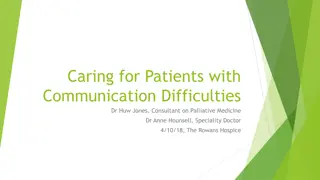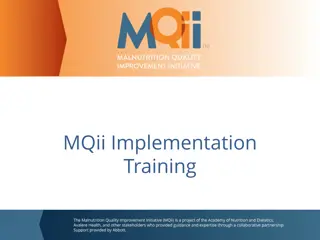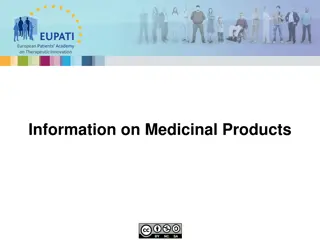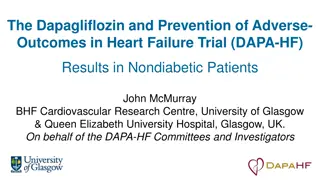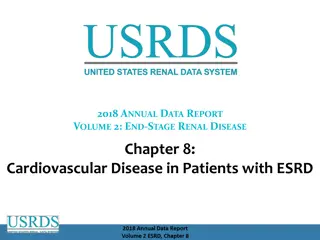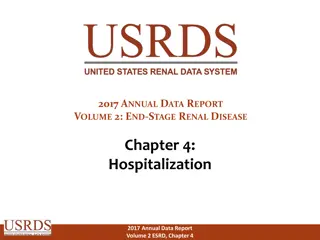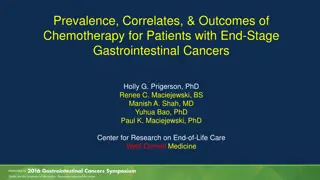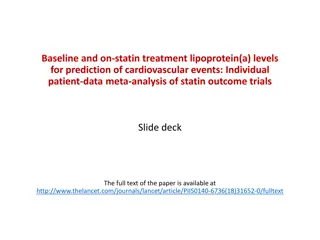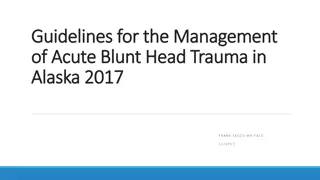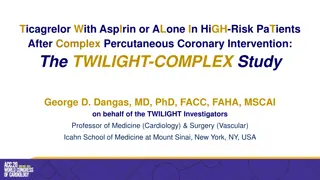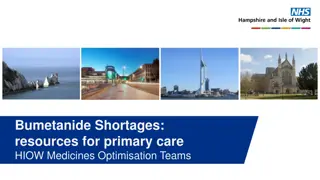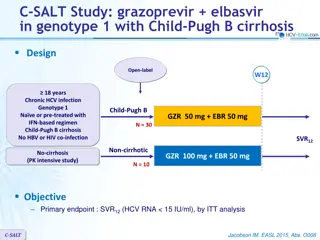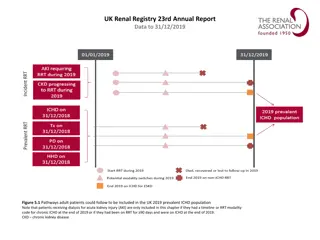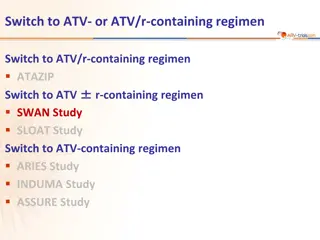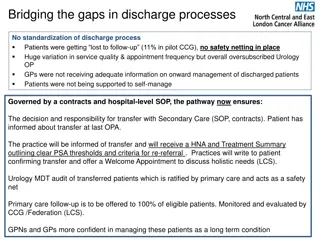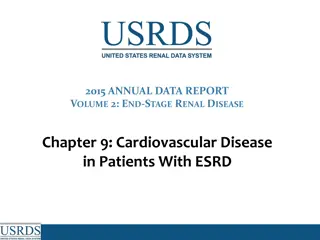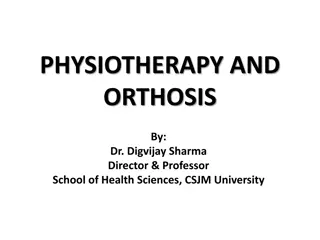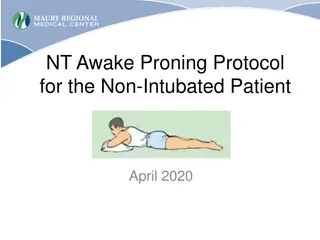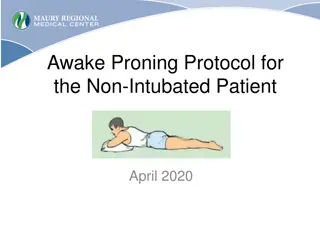Non Coronary Vascular Stents
Safe scanning of patients with non-coronary vascular stents (NCVS) in MRI settings in NHS Scotland. It covers key questions regarding the safety of patients with NCVS, including risks associated with MRI at different strengths, timing of MRI post-stent implantation, and the safety of various stent m
1 views • 9 slides
PKB - Patients Know Best
PKB (Patients Know Best) is a patient-held record platform that empowers patients to access and manage their health information effectively. It enables patients to track symptoms, connect devices, share data with clinical teams, and engage in self-care. With features like communication tools, sympto
0 views • 10 slides
Understanding Semaglutide Tablets: Key Insights for Indian Patients
Impomed Healthcare empowers Indian diabetes patients with comprehensive guidance on the innovative Semaglutide tablets. We explain how these tablets offer the dual benefits of blood sugar control and weight management through their unique mechanism. Our insights into Semaglutide help patients make i
11 views • 3 slides
Kidney Replacement Therapy Incidence Trends in Malaysia
The data presented in this study outlines the stock and flow of new Kidney Replacement Therapy (KRT) patients in Malaysia from 2012 to 2022. It covers the incidence rates of new dialysis patients, hemodialysis (HD) patients, peritoneal dialysis (PD) patients, and transplant patients. The figures and
1 views • 12 slides
Kidney Replacement Therapy Trends in Malaysia 2012-2022
A comprehensive overview of kidney replacement therapy (KRT) trends in Malaysia from 2012 to 2022 is presented, detailing the stock and flow of new KRT incidences and ESKD patients on KRT. The data includes the number of new dialysis patients, new HD patients, new PD patients, and new transplant pat
0 views • 12 slides
Understanding Non-Aqueous Solvents: Types and Classification
Inorganic non-aqueous solvents play a crucial role in chemical research and industry. This article by Dr. Princy K.G. delves into the classification of solvents based on protonicity, polarity, and aqueous vs. non-aqueous nature. It explores the types of non-aqueous solvents, such as protonic and non
1 views • 29 slides
Revised Guidelines for Home Isolation of COVID-19 Cases in India
The Ministry of Health & Family Welfare in India has issued revised guidelines for home isolation of very mild/pre-symptomatic/asymptomatic COVID-19 cases. Patients eligible for home isolation must have the necessary facility for self-isolation. Special considerations apply to elderly patients and t
2 views • 16 slides
Comparison of FFR-guided PCI vs Angiography-guided PCI in AMI with Multivessel Disease: FRAME-AMI Trial
In patients with acute myocardial infarction (AMI) and multivessel coronary artery disease, this study aims to compare fractional flow reserve (FFR)-guided PCI with angiography-guided PCI for non-infarct-related artery lesions. The hypothesis is that selective PCI guided by FFR is superior to routin
2 views • 23 slides
Molecularly-Guided Therapy vs Platinum Chemotherapy in CUP Patients
This trial aims to compare the efficacy and safety of molecularly-guided therapy or cancer immunotherapy based on genomic profiling with platinum-based chemotherapy in patients with cancer of unknown primary site. The study design includes multiple treatment regimens guided by genomic profiles, with
4 views • 9 slides
Understanding Non-Firm Quantities in Electricity Markets
Non-Firm Quantities in electricity markets involve units with non-firm access not being compensated for their non-firm capacity not getting accommodated on the system. The concept of Firm Access Quantity plays a key role in determining compensation levels for units, with differences in implementatio
0 views • 6 slides
Communicating with Patients with Cognitive Impairment and Other Communication Difficulties
This presentation highlights the causes of communication difficulties in patients, focusing on cognitive impairment, sensory impairments, and language barriers. It emphasizes the challenges of caring for these patients, including assessing pain and managing symptoms effectively. Practical strategies
0 views • 27 slides
Understanding Dysphagia in the ICU: Assessment and Impact
Dysphagia, the difficulty in swallowing, is a common issue in the ICU, affecting a significant percentage of intubated patients. It increases mortality, risk of pneumonia, malnutrition, and prolongs hospital stays. Assessment methods like bedside evaluation and FEES are crucial in managing dysphagia
5 views • 8 slides
Rapid Investigation Service Overview
The Wessex RIS is a new cancer referral pathway aimed at patients with concerning non-specific symptoms. Working in partnership with acute trusts in Wessex, the service provides timely investigations to exclude cancer in such patients. Established as part of the National Rapid Diagnostic Centre proj
0 views • 15 slides
Implementing MQii for Patient-Centered Care
Implementing the Malnutrition Quality Improvement Initiative (MQii) involves training project teams, understanding clinical workflows, and engaging patients in their care. Multidisciplinary project and care teams play essential roles in effective implementation, with patients and family caregivers c
5 views • 33 slides
European Patients Academy on Therapeutic Innovation: Information on Medicinal Products
Accurate and up-to-date information on medicinal products is crucial for patients and healthcare professionals. The European Patients Academy on Therapeutic Innovation provides insights into topics such as package leaflets, labelling requirements, and information to be provided according to the Dire
0 views • 25 slides
Biomarker-Guided Antibiotic Duration in Sepsis Patients
This research focuses on evaluating the safety and efficacy of a biomarker-guided approach to determine the duration of antibiotic treatment in hospitalized adult patients with sepsis. The study involves a multi-centre randomized controlled trial to assess if a treatment protocol based on monitoring
0 views • 53 slides
DAPA-HF Trial: Dapagliflozin in Heart Failure Patients without Diabetes
The DAPA-HF trial investigated the use of dapagliflozin, an SGLT2 inhibitor, in patients with heart failure and reduced ejection fraction, regardless of diabetes status. Funded by AstraZeneca, the study enrolled 4,744 patients from 20 countries, showing promising results in reducing cardiovascular d
3 views • 22 slides
Advances in Anticoagulation Therapy for Cancer-Related VTE and Stroke
Recent studies have shown advancements in anticoagulation therapy for cancer patients with venous thromboembolism (VTE) and stroke prevention. Direct oral anticoagulants (DOACs) are now considered beneficial for treating VTE in cancer, offering advantages in administration and efficacy. Different an
3 views • 9 slides
Effectiveness of Psychological Intervention in Managing Stress and Depression Among Cancer Patients
A study was conducted to assess the effectiveness of a psychological intervention program in managing stress, depression, and subjective well-being among cancer patients. The study involved 132 cancer patients aged 35 to 65 years, with 72 patients in the experimental group receiving psychological in
1 views • 48 slides
Prevalence of Cardiovascular Disease in Adult ESRD Patients: 2016 Data Report
The data report examines the prevalence of cardiovascular diseases in adult End-Stage Renal Disease (ESRD) patients in 2016 by treatment modality and age. It includes information on various cardiovascular conditions such as atrial fibrillation, acute myocardial infarction, coronary artery disease, a
2 views • 25 slides
Hospitalization Trends for End-Stage Renal Disease Patients 2006-2015
Analysis of adjusted hospitalization rates for End-Stage Renal Disease (ESRD) patients by treatment modality from 2006 to 2015, indicating differences in rates based on age, sex, race, and primary cause of kidney failure. The data covers all-cause and cause-specific hospitalization rates for ESRD pa
0 views • 21 slides
Chemotherapy Utilization in End-Stage Gastrointestinal Cancer Patients
This presentation explores the prevalence, correlates, and outcomes of chemotherapy use in patients with end-stage gastrointestinal cancers. Data is presented on the frequency of chemotherapy administration, correlates, harms, and benefits in patients in their final months of life. Insights from stu
0 views • 21 slides
Baseline Lipoprotein(a) Levels in Statin-Treated Patients for Cardiovascular Event Prediction
Lipoprotein(a) levels play a crucial role in cardiovascular disease risk assessment, especially in patients undergoing statin therapy. This individual patient-data meta-analysis from the Lancet explores the predictive value of lipoprotein(a) levels in 29,069 patients across seven landmark statin tri
0 views • 10 slides
Management Guidelines for Acute Blunt Head Trauma in Alaska
Management guidelines for acute blunt head trauma in Alaska include statistics on isolated blunt head injuries, transferred patients from non-neurosurgical facilities, patients kept in non-neurosurgical facilities with GCS 14-15, natural history of minor and moderate head injury, and the use of tele
0 views • 40 slides
Analysis of Kidney Transplant Trends in End-Stage Renal Disease Patients (1996-2013)
This report delves into the trends surrounding kidney transplants in end-stage renal disease (ESRD) patients from 1996 to 2013. It looks at the percentage of dialysis patients wait-listed, unadjusted kidney transplant rates, number of patients wait-listed for kidney transplants, transplant counts, p
0 views • 33 slides
Exploring Sexuality in ALS Patients: Importance, Challenges, and Impacts on Caregivers
Addressing the often overlooked topic of sexuality in Amyotrophic Lateral Sclerosis (ALS) patients, this collection of studies delves into the various aspects of sexual function, interest, and behaviors in individuals with ALS. Highlighting the significance of understanding and integrating sexuality
0 views • 11 slides
Understanding Agitation and Aggression in Psychiatric Patients
Agitation is a tension state characterized by anxiety and hyperactivity seen in depression, schizophrenia, and mania, while aggression involves hostile thoughts or actions towards others, common in impulse control disorders. Psychiatric patients are usually not aggressive, but certain mental illness
0 views • 16 slides
Ticagrelor Monotherapy vs. Ticagrelor + Aspirin in High-Risk PCI Patients: TWILIGHT-COMPLEX Study
Patients undergoing complex PCI are at high risk of ischemic events. The TWILIGHT-COMPLEX study aims to compare the safety and efficacy of ticagrelor monotherapy versus ticagrelor with aspirin in patients who completed 3 months of DAPT post-PCI. While extended DAPT may reduce ischemic events, it als
0 views • 27 slides
Bumetanide Shortages: Resources and Guidance for Primary Care Teams
Shortages of bumetanide have prompted the need for proactive management in primary care settings. It is vital for patients not to go without their diuretic medication, and healthcare providers are advised to switch patients to alternatives like furosemide. Monitoring patient symptoms, fluid balance,
0 views • 12 slides
Perioperative Anticoagulation in Atrial Fibrillation Patients
A thorough exploration of perioperative bridging anticoagulation in patients with atrial fibrillation, discussing the benefits of anticoagulation, therapeutic options, comparison of literature, and application in moderate-risk patients. The use of warfarin in atrial fibrillation treatment, standard
0 views • 39 slides
Study on Grazoprevir and Elbasvir in Genotype 1 with Child-Pugh B Cirrhosis
The C-SALT study evaluated the efficacy of grazoprevir and elbasvir in patients with genotype 1 chronic HCV infection and Child-Pugh B cirrhosis. The primary endpoint was achieving sustained virologic response at 12 weeks. The study included treatment-naive and pre-treated patients with IFN-based re
0 views • 7 slides
UK Renal Registry 23rd Annual Report 2019 Data Analysis
The UK Renal Registry's 23rd Annual Report provides comprehensive data on the pathways followed by adult patients to be included in the UK 2019 prevalent ICHD population. The report includes figures on percentage of patients with URR >65%, median URR achieved, changes in URR by sex between 2009 and
0 views • 19 slides
Legal Duties of Veterinarians: Obligations to Clients and Patients
Veterinarians have legal duties towards their clients and patients, including obligations to provide care in emergencies, not to neglect patients, and to withdraw services under valid reasons. They must not commit acts of negligence that deprive patients of necessary care and are expected to demonst
0 views • 22 slides
SWAN Study: Switch to ATV-Containing Regimen in HIV Patients
The SWAN Study compared switching HIV patients from a protease inhibitor (PI)-based regimen to atazanavir (ATV)-containing regimens to evaluate non-inferiority in virologic rebound rates at week 48. The study showed lower virologic rebound rates in patients on ATV compared to PI, with higher efficac
0 views • 8 slides
Improving Discharge Processes for Urology Patients
Addressing gaps in discharge processes for urology patients led to the implementation of a standardized pathway ensuring proper communication, transfer protocols, and follow-up strategies. The pathway includes informed patient transfers, detailed communication with primary care, holistic needs asses
0 views • 5 slides
Tuberculosis as a Risk Factor for Viral Non-Suppression in Patients Switched to Dolutegravir-Based Therapy
The study investigates the impact of incident tuberculosis on viral non-suppression among patients transitioning to Dolutegravir-based therapy in Zambia. It aims to identify factors associated with viral non-suppression and describe clinical outcomes in the context of tuberculosis occurrence. The re
0 views • 13 slides
Cardiovascular Disease in End-Stage Renal Disease Patients: Data Analysis 2011-2013
Understanding the prevalence and causes of cardiovascular diseases in patients with End-Stage Renal Disease (ESRD) is crucial for effective management. This report analyzes data from 2011-2013, focusing on the causes of death in ESRD patients, prevalence of cardiovascular diseases by treatment modal
0 views • 18 slides
Understanding the Role of Physiotherapy in Orthosis Provision
Physiotherapy plays a crucial role in the prescription and fitting of orthosis after acute injuries. This comprehensive intervention involves assessing patients' needs, aiding Orthotists in fabricating suitable orthosis, and preparing patients for its use. Various materials such as rubber, plastics,
0 views • 7 slides
NT Awake Proning Protocol for Non-Intubated Patients
This protocol outlines the benefits and procedure for prone positioning in non-intubated patients experiencing mild to moderate hypoxemia. It highlights patient eligibility criteria, equipment required, and considerations for nursing care. The protocol emphasizes improving oxygenation by promoting a
0 views • 11 slides
Awake Proning Protocol for Non-Intubated Patients
Learn about the benefits, eligibility, contraindications, equipment needed, and protocol for awake proning in non-intubated patients. Discover how this positioning technique can improve oxygenation and patient outcomes during respiratory illnesses. Eligible patients include those with COVID-19, resp
0 views • 14 slides


